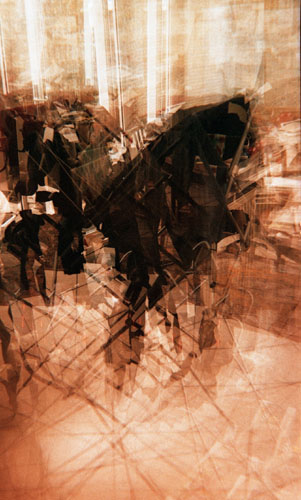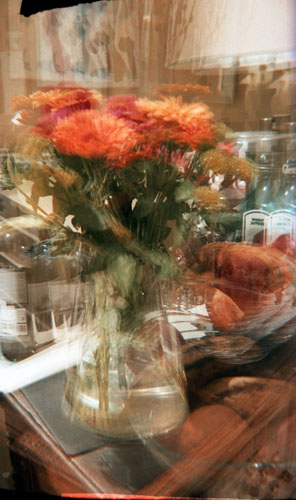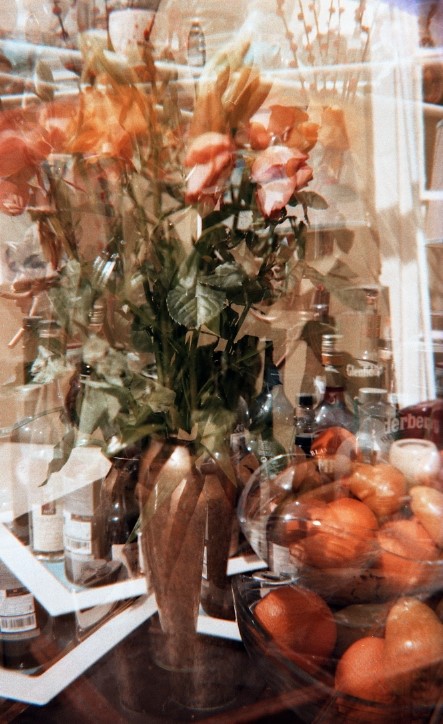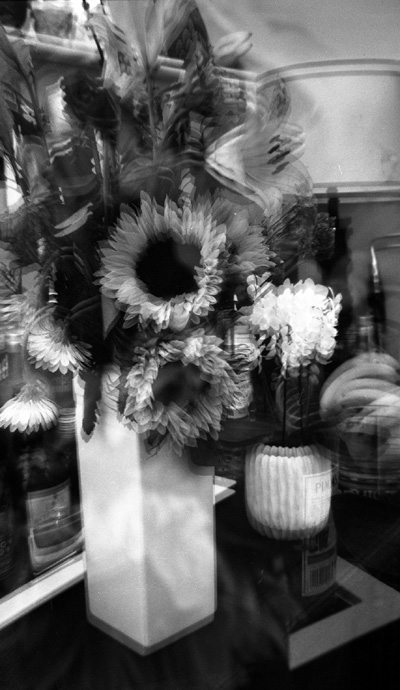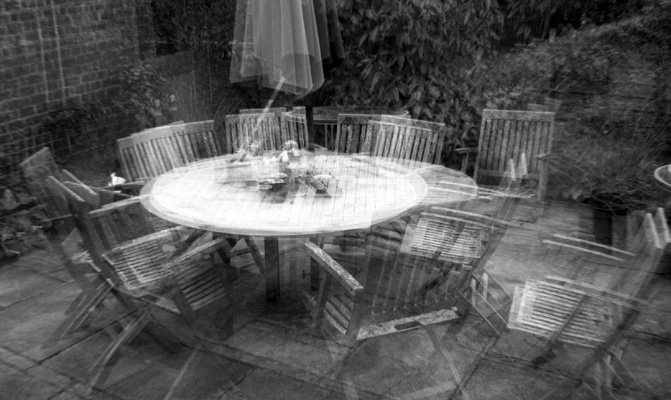|
Nick Trench is interested in using the potential for double exposure of the Brownie 127 for two projects. The first is to develop further an ongoing project in painting: 'Beginning', in which this single word is the subject of the painting. The word 'Beginning' is painted on a wall and photographed repeatedly from a number of angles. Paintings and photographs might be shown together to emphasise their similarities (the photograph 'as painting'), even though different media are used. A second strand of work is the use of double exposure in taking photographs of the home environment in which subjects such as a vase of flowers or the patio table are photographed from very slightly different viewpoints. As with the 'Beginning' project the intention is to create a jarring sense of instability out of something that is usually understood as normally 'set' or 'solid'. Nick Trench writes: Idea for a Story: The Centre Working title: The Neurosis of the Margin Two people hidden deep at the centre. They meet in the centre of Europe. They meet precisely at a time mid-way between two world wars. A young man and a young woman who are friends. They engage in a rich civilised conversation about art and the world. To maintain its reality this story can live only in a realm of speculation. They were most alive at 'the dead centre'. 'Intertwined' with this story is a 'parallel' story about a boy growing up in the suburbs of London in the nineteen sixties. He has asthma. The asthma sometimes disappears when he travels into the centre of the city. He has a neurosis about the centre. He likes the bright lights and the stimulation of the "centre of the city" (the excitement produces the adrenalin which temporarily banishes his asthma). But the problem with any centre is that there is always a falling away from it. How much of 'a centre' is the centre? How fragile or even real is (or was) that centre - questions asked only later? There is an excitement about moving through the transition zone between the periphery and the centre (entering the city). When he moves away from the centre his asthma returns. His neurosis is 'centred' on the suburban environment (a perception he had only later: 'there was nothing for me there any more...'). He did not think of the suburbs as a margin. He felt it instead as 'not-the-centre'. My asthma provided a kind of proof. For a long time he only intuits the cause of his asthma. Finally he understands that he 'must escape'. (Neurosis is no longer a term used by healthcare professionals.) The belief is that together these two stories themselves represent a 'centre'. But there is an uncertainty, a lack of faith in how much the two stories can be drawn together. They are bare bones of stories. There is a fear that they are only bare bones, that the stories, both individually and together, themselves lack substance (have no centre). After this I will escape, he thought, so that the stories can begin. Nick Trench studied at Sheffield Polytechnic (now Hallam University), graduating with a BA Hons Fine Art. His art practice includes painting, photography, film and writing. He has exhibited in the UK, Germany and Lithuania. He is currently working on a series of paintings concerned with the dry valleys of the landscape of south-east England. In 2015 he published a book of short stories Ideas for Stories. He lives in Petersfield, Hampshire. |
